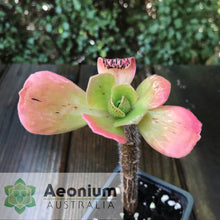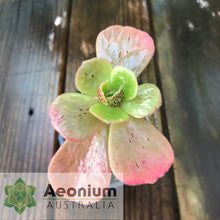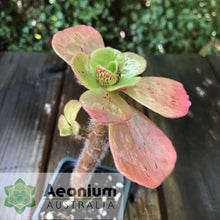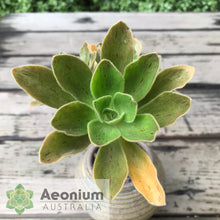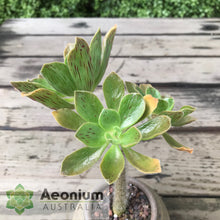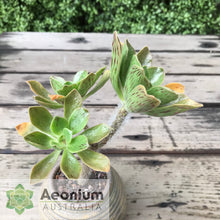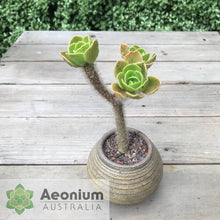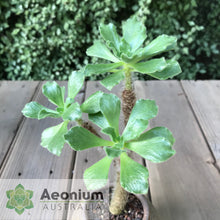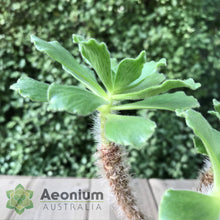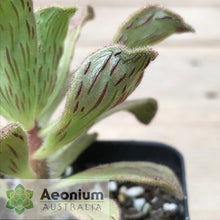
Description: Aeonium smithii is possibly the most unique species within the Aeonium genus! The first things you will notice are the characteristic extremely hairy stems and the very soft delicate foliage. Although not unique to this particular species, Aeonium smithii undoubtedly shows the most pronounced idioblasts, which you can see on the upper and lower surfaces of the leaves. Idioblasts are thought to be specialized plant cells which are used for water storage. These can easily be seen in this species as the linear bubble like structures on the leaf surfaces. (Please see photos)
Plants are generally only very small growing reaching around 20cm high, developing a few offsets. When grown in good light, plants will often show beautiful shades of orange and bronze.
Plant Care: This can often be a slightly temperamental species to grow. Plants are strictly winter growers and summer dormant, with the need to remain on the dry side over summer. We recommend not planting this species in the ground but rather show off its beauty by planting it in a nice decorative pot using a good free draining potting mix.
*During dormancy the plants will lose almost all of the leaves and this is natural, so please DO NOT be concerned by this.
Origins & Distribution: Canary Islands (Tenerife)
Comments: It is understood that this species is now unfortunately not as common in the wild as it once was and at one particular point was classified as endangered. This is mainly due to the illegal remove of the species by plants hunters and collectors.
Please read carefully before purchasing:
- Plants for sale are displayed in 70mm pots. You will receive the same or similar plant as in this photo. Please use this as a guide to the size of the plants available for purchase.
- Please refer to the postage and handling guide for information on how orders are posted, weekly cut off times and postage costs.











